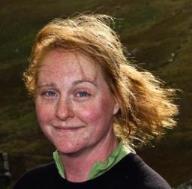 Large-scale methane measurements on individual ruminants for genetic evaluations
Large-scale methane measurements on individual ruminants for genetic evaluations
What is French for statistics?
Eli Rudinow Saetnan spent one intense week at INRA Theix in Clermont-Ferrand, France in September 2014 discussing statistical theory and methods for meta-analysis. The visit kick-started an on-going collaboration with my host, Dr. Eugene Maguy on the meta-analysis of methane mitigation strategies.As a post-doctoral teaching fellow at Aberystwyth University in the UK, much of my time is taken up with teaching responsibilities. It is rare to have an opportunity to immerse myself in my research interests for a whole week with no (or at least very few) distractions. My current research is focused on using meta-analytical tools to bring together data on the mitigation of methane emissions from livestock (http://mitigate.ibers.aber.ac.uk/). By using a meta-analytical approach, we can get a better understanding not only of the effectiveness of different mitigation strategies, but also of the uncertainty and variability in the current available data. Of particular relevance to the METHAGENE action, the database as it currently stands clearly illustrates the importance of harmonising measurement techniques. Meta-analyses are limited by the numbers of studies reporting comparative data, which has been a significant limitation so far. The collaboration Dr. Maguy should also give us a better insight into the uncertainty and variability of such measurements, and hence how much influence the diverse range of protocols and systems has on project outcomes.
To get our collaboration off on the right foot, the week was started by sharing our very different approaches to meta-analysis and gaining an understanding of the implications and limitations of the different statistical approaches. We had some very intense discussions, also with other colleagues at INRA Theix, tearing apart our different methodologies. The week also gave us an opportunity to compare databases, and discuss the limitations of each database approach. It became clear that we could gain a lot of analytical power by merging our resources, but that there are some significant challenges ahead in how to achieve this. The final days therefore involved discussions with relevant colleagues at INRA Theix about the practicalities of sharing data and resources between our two institutes.
 Although a week of in-depth statistical discussions was intense and challenging, it was also greatly rewarding. By asking questions,
answering awkward questions and really tearing apart the methods used, I gained a much better understanding of both analytical
strategies used and when each may be the most useful. The chance to focus on our work for a week, without disruption, meant that we
could clearly understand what we wanted to achieve and make a concrete plan for future collaborations. It gave us a head start on what
would have otherwise been a slow moving collaboration.
Although a week of in-depth statistical discussions was intense and challenging, it was also greatly rewarding. By asking questions,
answering awkward questions and really tearing apart the methods used, I gained a much better understanding of both analytical
strategies used and when each may be the most useful. The chance to focus on our work for a week, without disruption, meant that we
could clearly understand what we wanted to achieve and make a concrete plan for future collaborations. It gave us a head start on what
would have otherwise been a slow moving collaboration.
Dr. Eli Rudinow Saetnan
Aberystwyth University, UK


